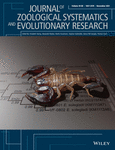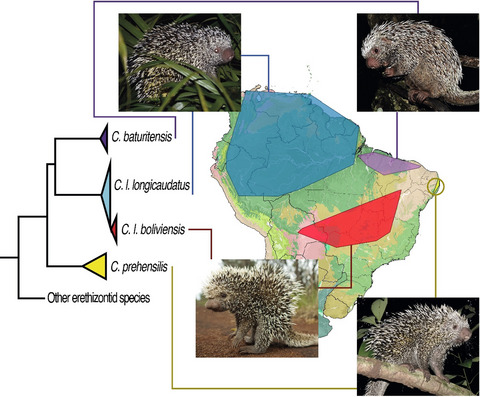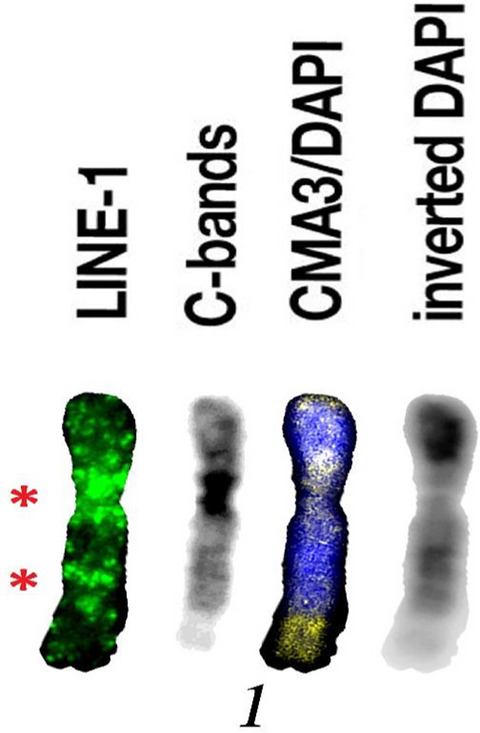Journal list menu
Export Citations
Download PDFs
Front Cover
- Page: i
- First Published: 17 December 2021
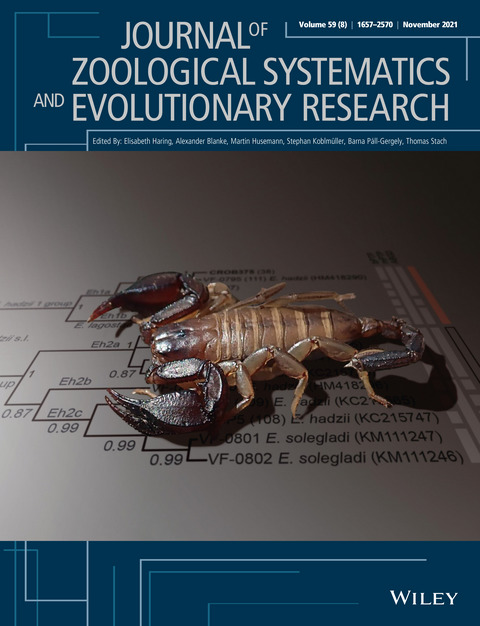
Cover caption: The cover image shows an adult specimen of Euscorpius cf. lagostae, one of the newly discovered cryptic lineages within Euscorpius hadzii species complex which is found at several localities in southern Dalmatia. The phylogenetic analyses revealed two deeply divergent lineages (E. hadzii groups 1 and 2) within E. hadzii s.l., and within the strictly Mediterranean, thermophilic, epigean E. hadzii 1 group (Eh1), two sublineages, Eh1a and Eh1b. The latter corresponds to the population of E. hadzii from Lastovo island (formerly Euscorpius carpaticus lagostae), which is in the present study elevated to species level as Euscorpius lagostae Di Caporiacco, 1950, stat. nov. The high genetic distances in the mitochondrial COI gene found between E. lagostae and Euscorpius cf. lagostae (p-distances up to 5.4 %) imply that latter lineage represents yet another species. Journal of Zoological Systematics and Evolutionary Research, Volume 59, Issue 8, Pages 1824–1849, Martina Podnar, Irena Grbac, Nikola Tvrtković, Christoph Hörweg, Elisabeth Haring: DOI: 10.1111/jzs.12562. Photo credit: Nikola Tvrtković, Graphics credit: Denis Lešić
Issue Information
- Pages: 1657-1660
- First Published: 17 December 2021
Phylogenomics of the bumblebee catfishes (Siluriformes: Pseudopimelodidae) using ultraconserved elements
- Pages: 1662-1672
- First Published: 29 July 2021
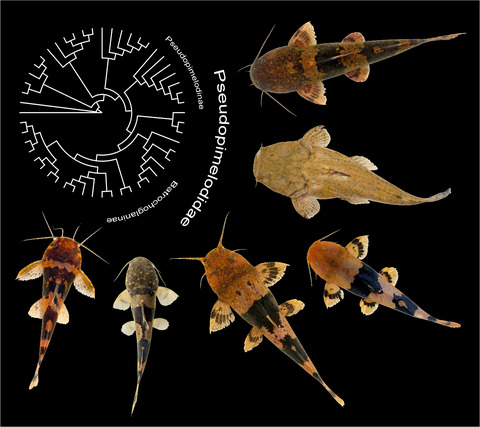
We obtained the first comprehensive phylogeny of Pseudopimelodidae, based on Ultraconserved elements. Our dataset comprised 868 UCE loci and 906,689 bp, covering 33 specimens of Pseudopimelodidae. Results strongly support the monophyly of Pseudopimelodidae and the arrangement of two major subclades herein classified as subfamilies Pseudopimelodinae and the newly proposed Batrochoglaninae.
Reproductive organs and spermatogenesis of the peculiar spermatozoa of the genus Kryptodasys (Gastrotricha, Macrodasyida), with an appraisal of the occurrence and origin of the tail-less spermatozoa in Gastrotricha
- Pages: 1673-1688
- First Published: 08 November 2021

Aflagellate spermatozoa in two species of Kryptodasys are reported. Their ultrastructure shows common features, which appear peculiar to the genus and different from those of male gametes of Dolichodasys, the only other macrodasyidan genus known to have aflagellate sperm. Additional information on the ultrastructure of the genital apparatus of the two Kryptodasys species is given. The functional and phylogenetic significance of the aflagellate condition of spermatozoa is discussed in the light of the generally flagellate sperm condition in Gastrotricha.
Weak population-genetic structure of a widely distributed nematode parasite of frogs in the western Palearctic
- Pages: 1689-1702
- First Published: 30 November 2021
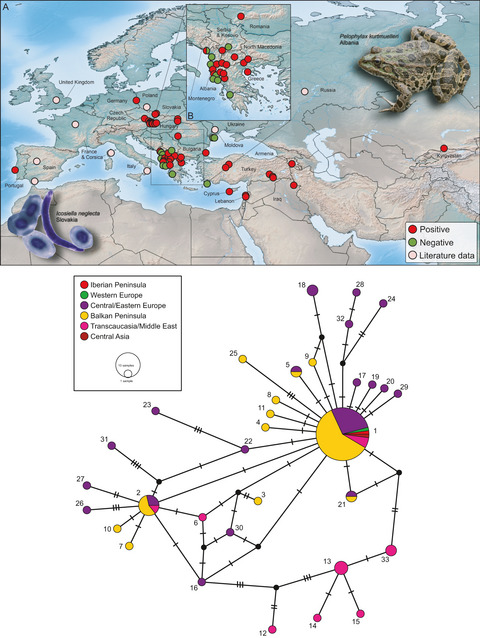
Icosiella neglecta is a nematode parasite of Ranidae frogs. This study reports this parasite from water frogs of the genus Pelophylax in Europe, the Middle East, and Central Asia. Despite the substantial genetic variability in a mitochondrial COI gene, we found only weak population-genetic structure across the study area. We assume that the population-genetic structure of I. neglecta might be linked to the evolutionary history and dispersal of its dipteran vectors.
The disjunct distribution of relict earthworm genera clarifies the early historical biogeography of the Lumbricidae (Crassiclitellata, Annelida)
- Pages: 1703-1717
- First Published: 31 August 2021
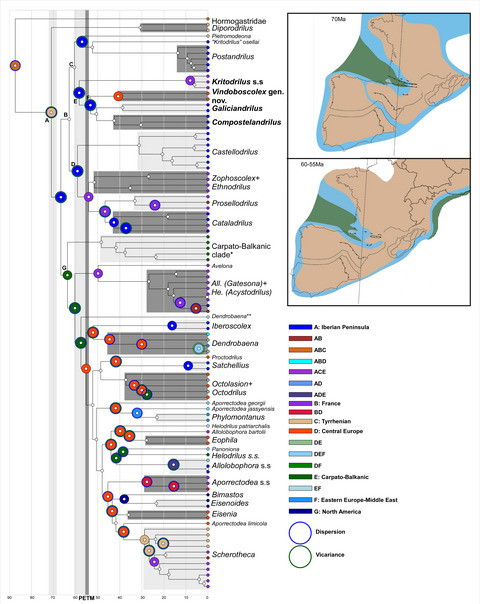
Molecular phylogenetic inference recovered a clade of French Kritodrilus closely related to the Northwestern Iberian Galiciandrilus and Compostelandrilus, the latter being a sister clade to Vindoboscolex gen. nov. Ancestral area reconstruction inferred the origin of the Lumbricidae in Corsica–Sardinia and the Iberian Peninsula, with eventual expansion eastwards towards France, Central Europe, and the Carpato-Balkanic area. For Kritodrilus and its relatives, this expansion may have overlapped with the Paleocene–Eocene thermal maximum. Later climatic changes may explain their strikingly disjunct ranges.
Deep Downunder: Integrative taxonomy of Austrobela, Spergo, Theta and Austrotheta (Gastropoda: Conoidea: Raphitomidae) from the deep sea of Australia
- Pages: 1718-1753
- First Published: 14 August 2021
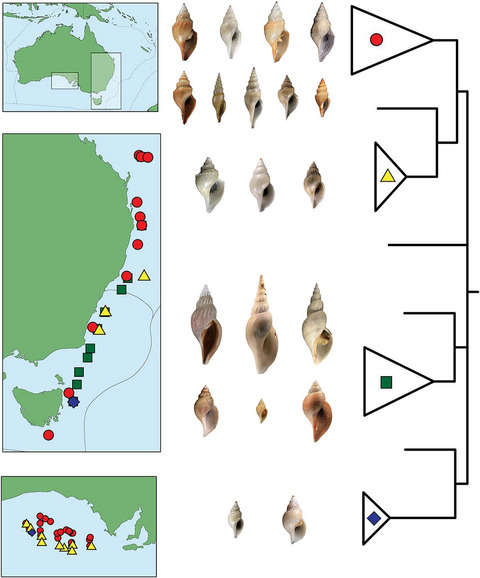
Based on an integrative approach, this study focuses on the ɑ-taxonomy of the deep-sea raphitomid snail genera Austrobela, Austrotheta, Spergo and Theta in Australia. Species are delimited based on combined mtDNA phylogeny, shell and radular characters and distributional and bathymetric data. Eleven new species endemic to Australia are described. Other studied species are shown to possess among the widest ranges ever recorded for the group. For the origin of some of the studied taxa, a speciation scenario, involving niche partitioning, seems to apply.
Species delimitation and phylogeny of Doto (Nudibranchia: Dotidae) from the Northeast Atlantic, with a discussion on food specialization
- Pages: 1754-1774
- First Published: 02 December 2021

Molecular species delimitation of the nudibranch genus Doto is performed using a combination of analyses on two genetic markers and morphological studies including radular ultrastructure. We discovered problems in D. fragilis, which consists of 1–3 species depending on analysis. Further, the species D. hystrix is found nested within D. fragilis. Analysis of food preferences of the species involved in the study contradicts the notion of strict monophagy within Doto.
Discordance of genetic diversification between deep- and shallow-water species of Kobeltocochlea Lindholm, 1909 (Caenogastropoda: Truncatelloidea: Benedictiidae) endemic to Lake Baikal with the description of a new species, review of the genus, and notes on its origin
- Pages: 1775-1797
- First Published: November 2021
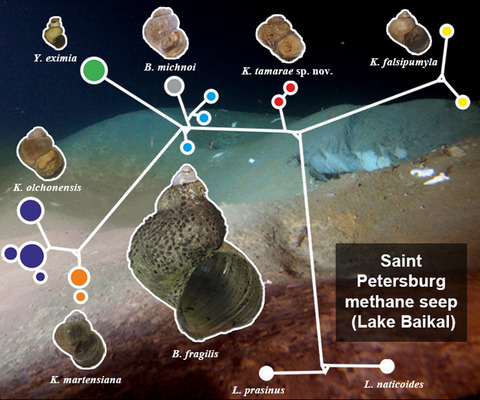
We describe a new species, Kobeltocochlea tamarae Sitnikova, Teterina & Maximova sp. nov., from Lake Baikal discovered in the Saint Petersburg methane seep at a depth of approximately 1400 m. We revealed the discordance of morphological and genetic data within Kobeltocochlea and other benedictiids, which reflected their complicated history. The current knowledge of benedictiids does not allow for significant changes in the taxonomy of the Benedictiidae, except for synonymizing K. lindholmiana with K. olchonensis and Pseudobenedictia with Benedictia that were also investigated.
Integrative taxonomy of insular land snails of the genus Sicradiscus Páll-Gergely, 2013 (Gastropoda, Plectopylidae) with description of a new species
- Pages: 1798-1815
- First Published: 29 October 2021
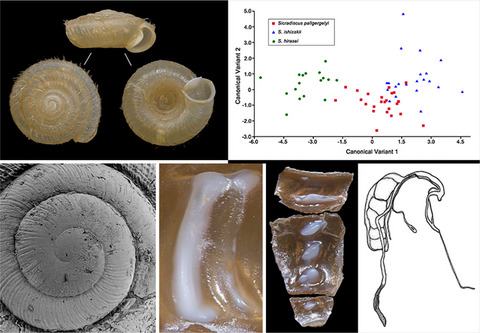
We examined shell, radular, and genital morphology, and mitochondrial phylogeny of three insular land snail genus Sicradiscus species in Japan and Taiwan. It was revealed that these species can be discriminated by their adult shell measurements and morphology of shell sculpture and parietal lamella. Molecular phylogenetic analyses showed monophyly of Japanese species. Additionally, they were more closely related to each other than to Taiwanese species. These findings indicate that shell morphology has significantly diverged in the Japanese lineage.
Libania rhodia sp. nov., a new predatory semislug from Rhodes (Gastropoda: Oxychilidae), and its phylogenetic and biogeographic relationships
- Pages: 1816-1823
- First Published: 29 November 2021
Hidden diversity, ancient divergences, and tentative Pleistocene microrefugia of European scorpions (Euscorpiidae: Euscorpiinae) in the eastern Adriatic region
- Pages: 1824-1849
- First Published: 20 November 2021
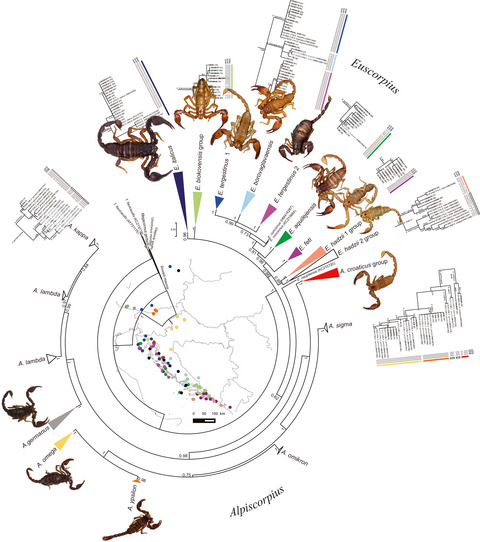
Based on an extensive phylogenetic analysis, we reviewed the scorpions of the genera Euscorpius and Alpiscorpius with a focus on the region around the Eastern Adriatic. The deep intraspecific genetic divergences observed in some clades warrant taxonomic revision of several taxa (Euscorpius tergestinus, Euscorpius hadzii, Euscorpius biokovensis, Euscorpius (Alpiscorpius) croaticus). Moreover, the ranges of several species have been revised. The great diversity and pronounced phylogeographic structure are a direct consequence of the geological history and complex topography of the region.
Understanding the real magnitude of the arachnid order Ricinulei through deep Sanger sequencing across its distribution range and phylogenomics, with the formalization of the first species from the Lesser Antilles
- Pages: 1850-1873
- First Published: 26 November 2021
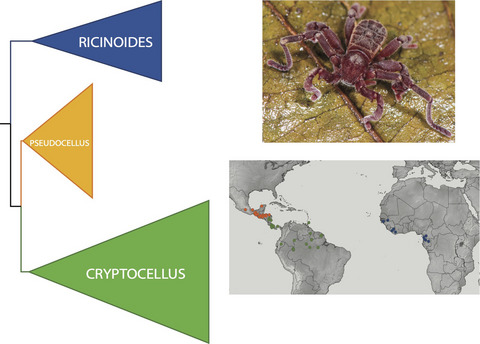
We use phylotranscriptomics and deep Sanger sequencing to better understand the relationships and divergence times within Ricinulei (hooded tick spiders) and to have a better idea about their species ranges by using species delimitation analyses. Phylogenetic inference supported the monophyly of the three recognized genera, Ricinoides in Africa, Pseudocellus in North America, and Cryptocellus in Mesoamerica and South America and their initial diversification during the Late Cretaceous. Additionally, we formalize the only Ricinulei species from the Lesser Antilles as Cryptocellus tobagoensis Giribet & Benavides sp. nov.
A synthesis on troglobitic springtails in Europe
- Pages: 1874-1890
- First Published: 17 November 2021
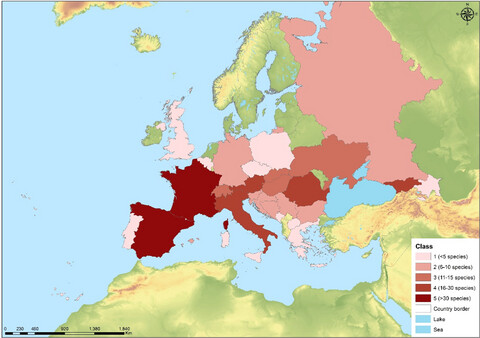
This paper summarizes knowledge on the troglobitic springtails known from European caves. 338 troglobitic springtail species are recorded from European countries. Our investigation revealed uneven distribution of the troglobitic species in the most important mountain ranges. Species richness and endemism are higher in Spain and France than in other remaining countries. The paper represents a strong potential for fast advancements in our understanding to clarify the indices of endemism and to generate data for future biogeographic studies.
Spatio-temporal genetic structure in populations of the Chagas’ disease vector Triatoma infestans from Argentina
- Pages: 1891-1902
- First Published: 21 October 2021
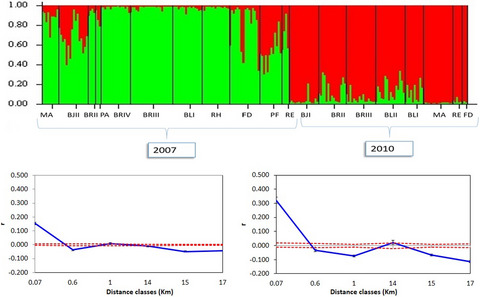
In the present work, we compare the fine-scale spatial genetic structure in two temporal samples of Triatoma infestans from an area without vector control for 31 months. The results suggest that in subdivided populations, where restricted gene flow is sustained over time, the genetic drift could accentuate the differentiation among subpopulations. Spatial analysis suggests a dispersion range around 550 m. Reinfestation by active dispersal could be reduced by implementing control within a radius of 550 m around the infested area.
Phylogenetic review of the tribal system of Aleocharinae, a mega-lineage of terrestrial arthropods in need of reclassification
- Pages: 1903-1938
- First Published: 14 September 2021
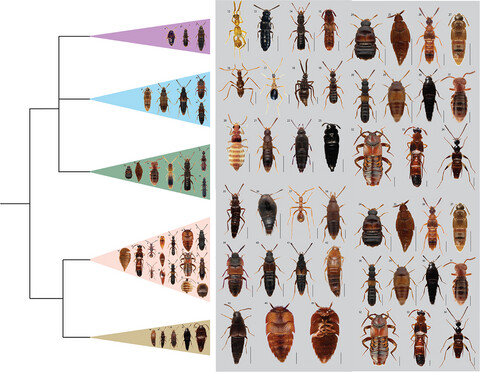
We provided a review of all outstanding phylogenetic questions ever considered for each of 62 current tribes of Aleocharinae rove beetles. For each tribe we provided current diagnoses as they are understood now and, where possible, we stressed emerging monophyletic clades within or across the current legacy tribes and gave their diagnostic features too. Our review will facilitate further detailed phylogenetic research and large-scale reclassification of this enormously diverse, abundant, and scientifically challenging arthropod lineage.
An exquisitely preserved tiny bark-gnawing beetle (Coleoptera: Trogossitidae) from mid-Cretaceous Burmese amber and the phylogeny of Trogossitidae
- Pages: 1939-1950
- First Published: 11 August 2021
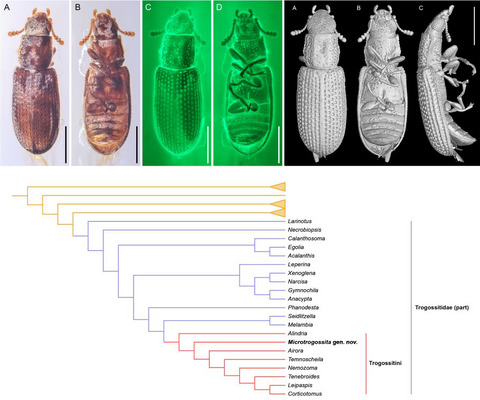
The first fossil representative of the cleroid family Trogossitidae is described from mid-Cretaceous Burmese amber. Microtrogossita qizhihaoi Li & Cai gen. et sp. nov. has a unique character combination among Trogossitidae. The fossil was resolved as a member of Trogossitini within Trogossitidae based on a morphological phylogenetic analysis. The tribal composition of Trogossitidae is discussed in light of our re-analysis of a previously published four-gene dataset under a site-heterogeneous model.
The correlation between wing interference patterns and body size in Coniceromyia Borgmeier (Diptera: Phoridae) and its implications to the understanding of the former as a sexually selected trait
- Pages: 1951-1961
- First Published: 19 October 2021
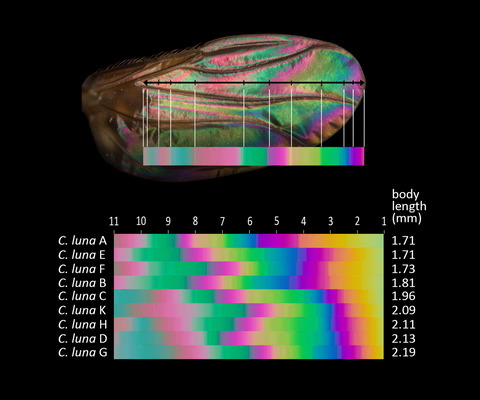
Wing interference patterns (WIPs) are structural colors of insect wings. These patterns have been thought to be visual signals under sexual selection. This study demonstrated that WIPs are correlated to body size along the phylogeny of a genus of phorid flies and within one of two species studied. These results highlight the importance of considering body size in investigations of the role of WIPs in sexual selection.
Pruning the Barcode Index Numbers tree: Morphological and genetic evidence clarifies species boundaries in the Eupithecia conterminata complex (Lepidoptera: Geometridae) in Europe
- Pages: 1962-1981
- First Published: 30 November 2021
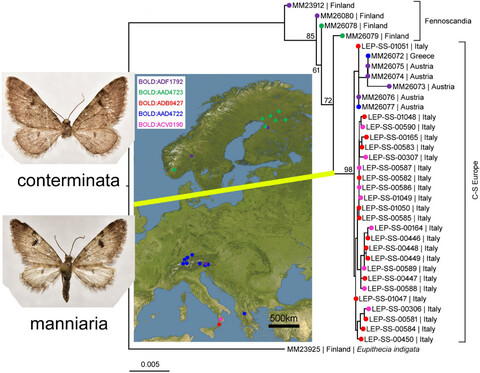
Eupithecia conterminata is a geometrid species widespread in North European countries and restricted to mountainous regions in the rest of the continent, for which five mtDNA lineages are found in Europe. To assess their taxonomic status, we combined morphological traits and molecular data. We recognized two valid species, E. conterminata, in northern countries and Eupithecia manniaria sp. rev., in the rest of the continent. Their mitochondrial diversity appears to be coherent with biogeographical histories of their food plants.
Putting European lampreys into perspective: A global-scale multilocus phylogeny with a proposal for a generic structure of the Petromyzontidae
- Pages: 1982-1993
- First Published: 31 August 2021
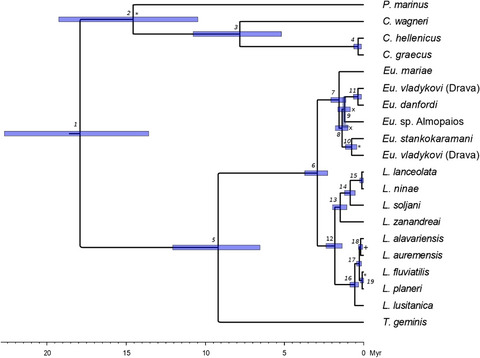
We apply a multilocus approach to assess the phylogenetic relationships of northern hemisphere lampreys, with a special emphasis on the European species. The phylogeny obtained with mitochondrial markers revealed a clear separation of all northern hemisphere lampreys. Among those, our multilocus results show several polyphyletic genera, stressing the need for a taxonomic revision in a near future. Considering European species, our results argue for a taxonomic revision of Eudontomyzon, with emphasis on Eudontomyzon vladykovi Oliva & Zanandrea, 1959.
A taxonomically complex catfish group from an underrepresented geographic area: Systematics and species limits in Hypostomus Lacépède, 1803 (Siluriformes, Loricariidae) from Eastern South America
- Pages: 1994-2009
- First Published: 06 December 2021
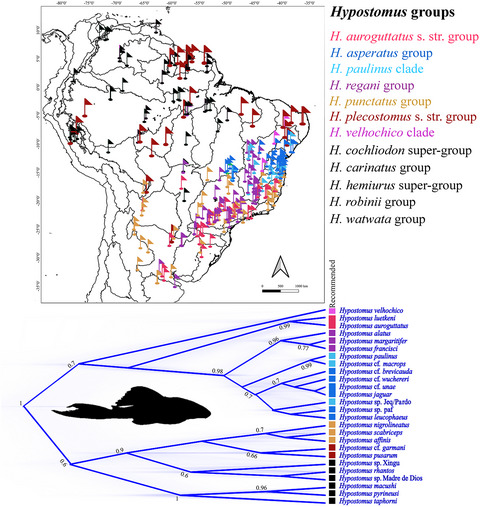
The genus Hypostomus is structured into 10 phylogenetic groups with shallow divergence and overlapping area of occurrence of most groups in various hydrogeographic ecoregions. Five of these groups occur within the Northeastern Mata Atlântica (NMA) and São Francisco (SF) plus two new clades suggested here, one being exclusive to SF and the other occurring within these two ecoregions. This study shows that only two phylogenetic groups occur in both ecoregions and highlights the occurrence of possible species complexes as well as the presence of putative new lineages restricted to this area of interest.
Morphology-based phylogeny of Eigenmanniinae Mago-Leccia, 1978 (Teleostei: Gymnotiformes: Sternopygidae), with a new classification
- Pages: 2010-2059
- First Published: 23 October 2021
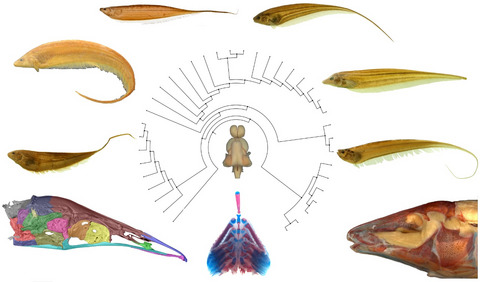
We advance on the taxonomic knowledge of Eigenmanniinae by examining most of its species richness and building a hypothesis of phylogenetic relationships based on the parsimony analysis of 144 anatomical characters. As result, a new classification was proposed. This study highlights the crucial role that a diverse set of anatomical characters play at different hierarchical levels in phylogenetic reconstructions.
Testing the phylogenetic hypotheses of Stevardiinae Gill, 1858 in light of new phenotypic data (Teleostei: Characidae)
- Pages: 2060-2085
- First Published: 11 August 2021
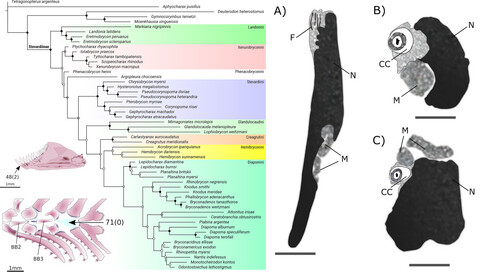
Many stevardiin tetras are inseminating and display diverse morphology of reproductive organs and sperm cells, which we analyzed through a dataset of available molecular data and 176 morphological characters for 54 species. Parsimony analyses corroborated the monophyly of the tribes of Stevardiinae with Landonini including Eretmobryconini and a valid Phenacobryconini. Insemination was ambiguously optimized as present in the ancestor of Stevardiinae, which is a novel hypothesis on its evolution.
Phylogeographic pattern, genetic diversity, and evolutionary history of the enigmatic freshwater fish species Aulopyge huegelii (Actinopterygii: Cyprinidae)
- Pages: 2086-2102
- First Published: 08 December 2021
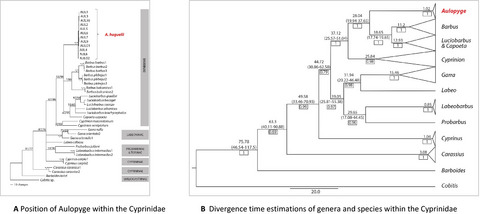
In this study, molecular genetic analyses based on three molecular markers were performed to confirm the position of Aulopyge within Cyprinidae, obtain data on its evolutionary history, and describe its population genetic structure and diversity. Phylogenetic reconstruction based on cytb sequences corroborated the independent position of this species and its placement within the Barbinae subfamily (Fig. A). The evolutionary history of A. huegelii began already in the middle Oligocene, around 28 million years ago (Fig. B).
Evolutionary history of the Aztec shiner Aztecula sallaei (Günther, 1868) (Teleostei: Cyprinidae): An endemic and monotypic species of Mexico
- Pages: 2103-2118
- First Published: 30 October 2021
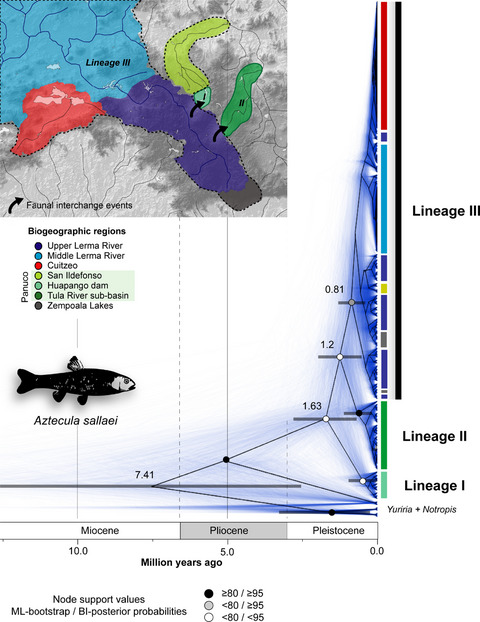
The cyprinid Aztecula sallaei is structured in three lineages with shallow divergences and almost simultaneous times dated (0.6–2.79 Mya), a lineage widely distributed across several drainage basins while the other two are highly restricted. This pattern and evolutionary history seem to be linked to the tecto-volcanic activity in central Mexico that promoted ichthyofaunal interchanges events between the headwaters. This study highlights the importance of disentangling the phylogeographic patterns of this monotypic genus, which is now described as three evolutionary units.
Introgressive hybridization between two phylogenetic lineages of charrs (Salvelinus: Salmonidae) in northeastern Asia
- Pages: 2119-2133
- First Published: 24 November 2021
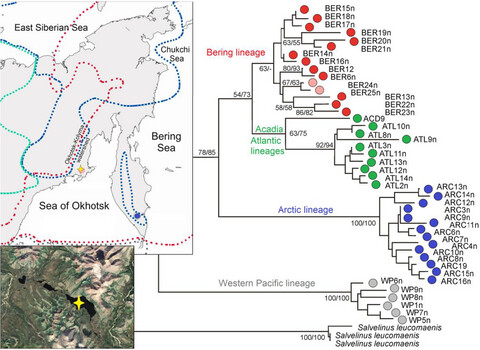
We analyzed mitochondrial (mt) DNA control region and microsatellite loci variation of charrs of the genus Salvelinus from Elikchan Lakes (Sea of Okhotsk coast, Russia) and several remote locations. New data allowed us to clarify the phylogeography of the Arctic lineage of Salvelinus taranetzi in northeastern Asia and to discuss the origin of Salvelinus sp. 7 from Lake Grand. We demonstrated secondary contact and past hybridization between Bering and Arctic lineages in Lake Grand and complete fixation of introgressed mtDNA.
Parallel evolution of a new sympatric species pair of Crenicichla (Teleostei: Cichlidae) from Misiones, Argentina with a review of biogeography and mitonuclear discordance in the C. mandelburgeri species complex
- Pages: 2134-2149
- First Published: 01 December 2021
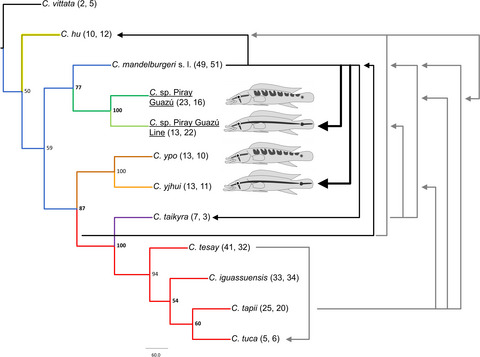
A new species pair from the Piray Guazú river from the Crenicichla mandelburgeri species complex has evolved a parallel morphological and ecological dichotomy to another species pair from the same species complex (Crenicichla ypo, Crenicichla yjhui) and also to species in the unrelated Crenicichla missioneira species complex (C. missioneira, Crenicichla celidochilus). Based on mitochondrial DNA phylogeny and ddRAD analyses of the nuclear genome we review mitonuclear discordance and biogeography during the evolution of the whole C. mandelburgeri species complex.
Brain morphological adaptations of Gambusia affinis along climatic gradients in China
- Pages: 2150-2160
- First Published: 14 October 2021
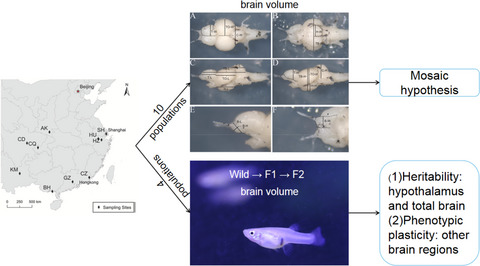
We studied morphological variations of the brain among Gambusia affinis obtained from ten different populations in China. The results showed that the sizes of total brain and brain regions were affected by climatic gradients, and variation in brain morphology supports the mosaic hypothesis. Common-garden experiments indicated that the variations in the sizes of the hypothalamus and the total brain were heritable, while that of other brain regions were phenotypically plastic.
Does spatial sorting occur in the invasive Asian toad in Madagascar? Insights into the invasion unveiled by morphological analyses
- Pages: 2161-2169
- First Published: 26 August 2021
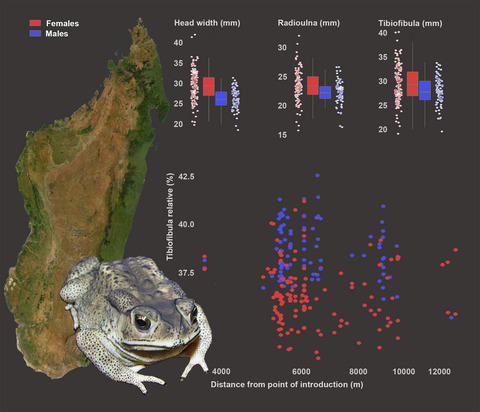
Spatial sorting of dispersal-relevant traits may occur in rapidly expanding populations, driving the evolution of dispersive phenotypes. In invasive species, this process can have important implications for their management. We investigate the morphology of the invasive Asian common toad in Madagascar to detect spatial sorting and to gather information on the invasion dynamics of this highly problematic invasive species. Results exclude the presence of spatial sorting in the traits analyzed, but bring important new insights into the invasion dynamics.
Phylogeographic advances in midwife toads (Alytes) support the existence of a novel taxon endemic to the Central Pyrenees
- Pages: 2170-2179
- First Published: 24 November 2021

Combining phylogenetic and population genetic evidence, we show that the European midwife toad complex consists of two species that experienced an intricate evolutionary history, Alytes obstetricans and A. almogavarii. The latter further hide two subspecies, including an enigmatic micro-endemic from the Spanish Central Pyrenees for which we provide a taxonomic description as A. a. inigoi ssp. nov.
Evolution of sexual dimorphism in an endemic toad of the Qinghai–Tibet plateau fails to obey Rensch’s rule
- Pages: 2180-2188
- First Published: 28 October 2021
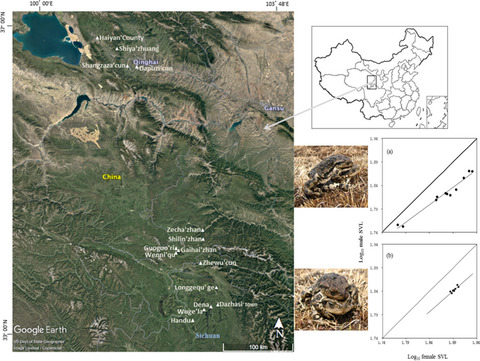
In this study, we examined body size from 15 populations of Bufo minshanicus in the Qinghai–Tibet plateau in China. We estimated the age of the individuals from eight populations to evaluate Rensch's rule and possible causes of variation in SSD. The patterns of SSD failed to obey Rensch's rule or its inverse, even though fecundity selection in toads tends to favor larger female body size. We suggest that sexual and fecundity selection play an equal role driving the evolution of SSD within toads.
How many species does the Psammobates tentorius (tent tortoise) species complex (Reptilia, Testudinidae) comprise? A taxonomic solution potentially applicable to species complexes
- Pages: 2189-2211
- First Published: 01 September 2021
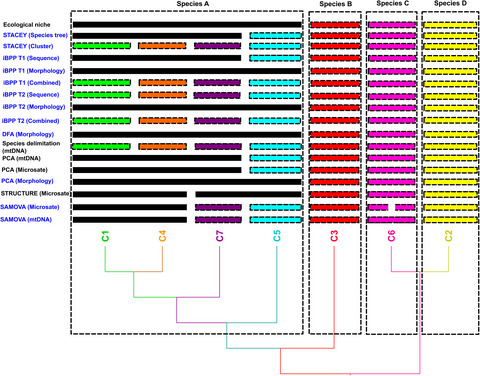
After comparing species delineation, results obtained from multiple evidences, ecological niche, multi-locus DNA sequences, multiple microsatellite DNA markers, morphology. The four species scheme appears as the best taxonomic solution for the Psammobates tentorius species complex. The alternative species tree topology suggested by ABC simulation analysis is better and more inclusive in explaining the genealogical history in the species complex.
A comprehensive appraisal of evolutionary diversity in venomous Asian coralsnakes of the genus Sinomicrurus (Serpentes: Elapidae) using Bayesian coalescent inference and supervised machine learning
- Pages: 2212-2277
- First Published: 24 November 2021
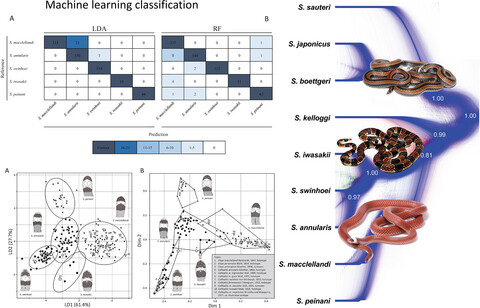
Systematics and species boundaries of the elapid snake genus Sinomicrurus were investigated using mitochondrial and nuclear markers. We utilized a Bayesian framework, reinforced by comparative morpho-anatomical analyses leveraging comprehensive geographic representation, to diagnose and delimit species. Our morphometric evaluations contrasted classical discriminant function analyses and random forest, a tree-based supervised machine learning technique. We conclude that previous taxonomic schemes often confounded between species-level and population-level variation, and we update the taxonomy by recognizing a total of nine species within Sinomicrurus.
Integrative taxonomy reveals two species and intraspecific differentiation in the Vipera latastei–monticola complex
- Pages: 2278-2306
- First Published: 02 October 2021
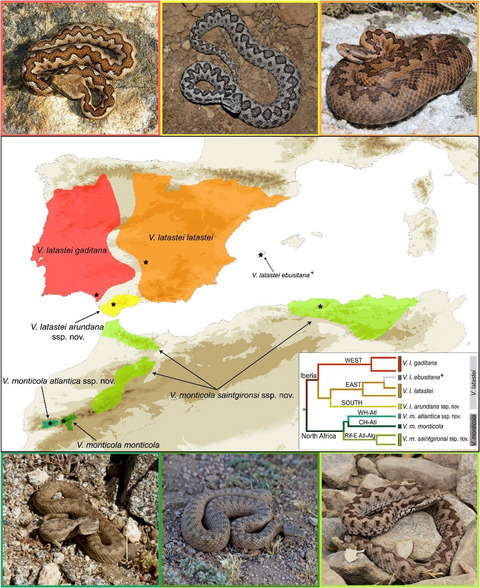
An integrative taxonomic approach updates the taxonomy of the Vipera latastei–monticola complex, identifying two vicariant clades as different species (Vipera latastei in Iberia, and Vipera monticola in North Africa) and three parapatric lineages within each of these species with subspecific status. Three new subspecies are defined: Vipera latastei arundana ssp. nov. in southern Iberia, Vipera monticola atlantica ssp. nov. in the western High Atlas, and Vipera monticola saintgironsi ssp. nov. in the eastern High Atlas, Middle Atlas, Rif, Tellian Atlas, and Aurès.
Conflicting relationships of Vipera walser inferred from nuclear genes sequences and mitochondrial DNA
- Pages: 2307-2320
- First Published: 23 October 2021
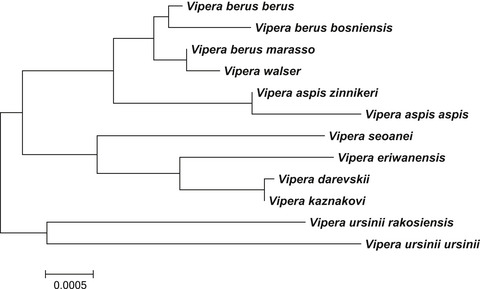
Vipera walser appears as embedded in the diversity of Vipera berus in a neighbor-joining population tree based on mean inter-populations pairwise distances using concatenated sequences of five independent nuclear genes (3457 bp in total). Despite based on a very small portion of the genome, this result is supported by all analyses of concatenated or gene-by-gene alignments and conflicts with the highly divergent mitochondrial DNA of this species.
Phylogeographic diversification of the Mesalina olivieri species complex (Squamata: Lacertidae) with the description of a new species and a new subspecies endemic from North West Africa
- Pages: 2321-2349
- First Published: 19 August 2021
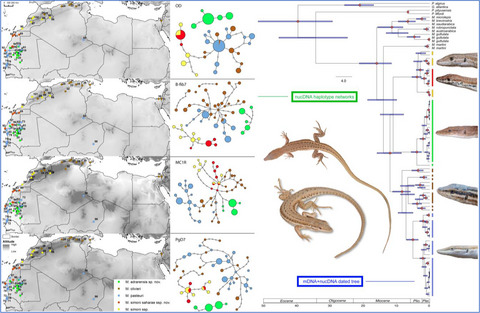
We used an integrative taxonomy framework to revise the systematic of the Mesalina olivieri species complex and its species distribution limits. Our results point to a diversification of the complex during the late Miocene, that led to the formation of four species: Mesalina simoni (Boettger, 1881), Mesalina olivieri (Audouin, 1829) Mesalina pasteuri (Bons, 1960) and, the new species here described as Mesalina adrarensis sp. nov.. Together with this new species, we also describe the south-western Moroccan populations of Mesalina olivieri as Mesalina simoni saharae ssp. nov.
Evidence of cryptic diversity in Podarcis peloponnesiacus and re-evaluation of its current taxonomy; insights from genetic, morphological, and ecological data
- Pages: 2350-2370
- First Published: 21 October 2021
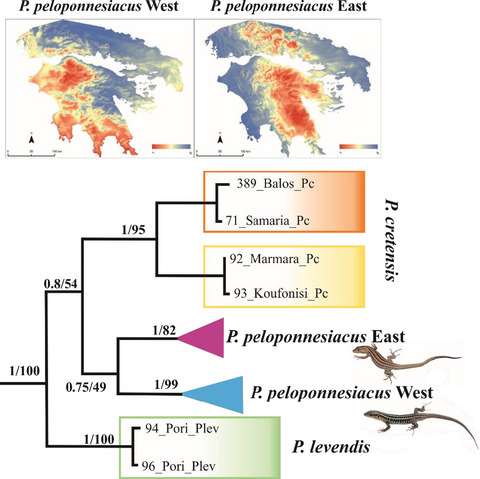
We investigated the intraspecific phylogenetic relationships and clarified the taxonomic status of Podarcis peloponnesiacus (endemic species to the Peloponnese, Greece) by analyzing eight gene fragments (two mitochondrial and six nuclear) and several morphological traits, together with ecological niche modeling. We consistently uncovered two, highly supported, clades within P. peloponnesiacus with distinct geographic distribution, which have diverged in Pleistocene. The combination of our results allowed us to identify the two revealed clades as distinct species: P. peloponnesiacus and P. thais.
Diversification and secondary contact in the magpie-jays (Calocitta) throughout the pacific lowlands of Mesoamerica
- Pages: 2371-2386
- First Published: 01 December 2021
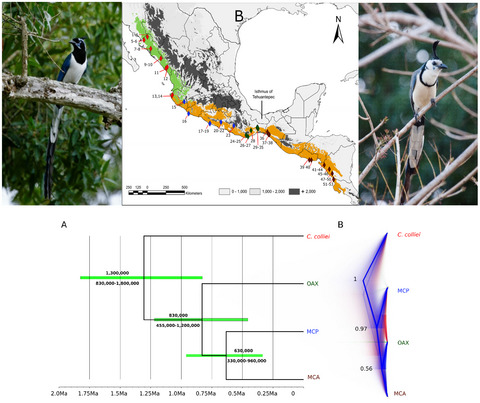
There are two currently recognized species of magpie-jays of the genus Calocitta (Corvidae) distributed throughout the MDF: the monotypic Black-throated Magpie-jay (C. colliei) and the polytypic White-throated Magpie-jay (C. formosa). These two species have sometimes been considered conspecific and have been reported to hybridize in sympatric areas, where birds with intermediate plumage characters are recorded. Using mitochondrial and nuclear DNA markers from individuals of the two species, we analyze the phylogeographic structure and the genetic diversity within Calocitta under an Isolation with Migration (IM) model. The results showed strong genetic structure, in which the two currently recognized species and some of the C. formosa subspecies grouped into four well-supported and reciprocally monophyletic clades. IM analyses suggested divergence dates for the split between C. colliei and C. formosa that were congruent with geological factors, as well as with the deep divergence of the three lineages within C. formosa. These factors likely led to a dynamic demographic history in all lineages.
A molecular and chromosomic meta-analysis approach and its implications for the taxonomy of the genus Makalata Husson, 1978 (Rodentia, Echimyidae) including an amended diagnosis for M. macrura (Wagner, 1842)
- Pages: 2387-2409
- First Published: 08 December 2021
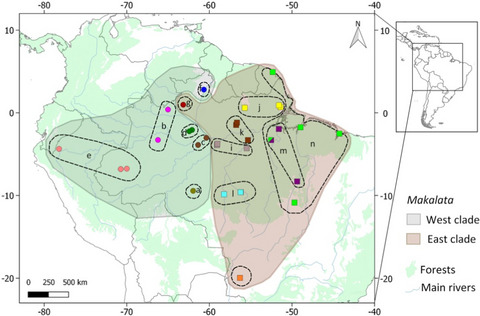
Makalata comprises medium-sized arboreal echimyid rodents with orange to reddish nose. Two species are recognized: M. didelphoides and M. macrura. We identified 14 clades representing potential species using genetic data. Four lineages in the Guiana Shield were shown to be morphological cryptic species. The name M. didelphoides cannot be applied to any specimen without a genetic approach and sequencing of holotypes. The results reinforce the importance of integrative approach to obtain a more accurate picture of the taxonomic diversity of this genus.
Integrative systematics of Neotropical porcupines of Coendou prehensilis complex (Rodentia: Erethizontidae)
- Pages: 2410-2439
- First Published: 26 October 2021
Evolutionary patterns of cranial ontogeny in Sigmodontines (Rodentia, Cricetidae)
- Pages: 2440-2456
- First Published: 25 September 2021

In this report, we quantified the cranial ontogeny of sigmodontine rodents rebuilding their ancestral growth pattern and testing the role of evolutionary history on cranial ontogeny. Sigmodontines were conservative without unique patterns defining tribes. Cranial elongation was a widespread pattern and likely a plesiomorphic condition. Few synapomorphies defined the ancestor of Sigmodontinae, suggesting a biomechanically optimal morphology for omnivorous diets that allows them the exploitation of multiple types of food, with minor morphological adjustments.
Locomotor habits and phenotypic evolution of the appendicular skeleton in the oryzomyalian radiation in the Neotropics (Sigmodontinae, Cricetidae, Rodentia)
- Pages: 2457-2480
- First Published: 26 October 2021
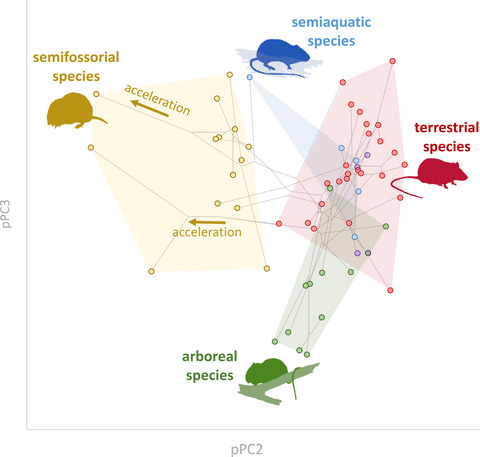
Phylogenetic comparative methods were employed to access morphological evolution of appendicular skeletons during the oryzomyalian radiation in the Neotropics. Results showed that locomotor habits and phylogenetic history were important factors shaping their phenotypes. Deceleration in phenotypic evolution following an early burst was not detected, as expected in some cases of adaptive radiation. Two cases of evolutionary acceleration were detected in lineages that independently gave rise to the most specialized semifossorial taxa, suggesting that strong natural selection operated in their emergence.
Role of Pleistocene climatic oscillations on genetic differentiation and evolutionary history of the Transvolcanic deer mouse Peromyscus hylocetes (Rodentia: Cricetidae) throughout the Mexican central highlands
- Pages: 2481-2499
- First Published: 21 October 2021
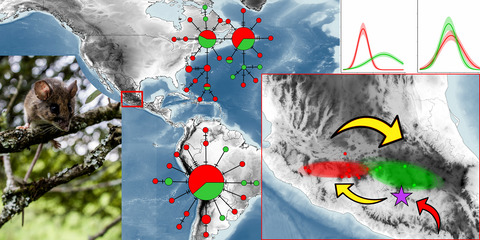
In this study we assessed, based on DNA sequence analyses and ecological niche modeling, the phylogenetic relationships and evolutionary history of the Transvolcanic deer mouse (Peromyscus hylocetes). This is an endemic species to the highlands of central Mexico. Our results support that P. hylocetes diverged during the late Pleistocene and invaded the central south part of the Trans-Mexican Volcanic Belt mountains. Subsequently, population expansions and contractions lead to the formation of two genetic clusters that subsist until the present.
Diversity, distribution, and evolutionary history of the most studied African rodents, multimammate mice of the genus Mastomys: An overview after a quarter of century of using DNA sequencing
- Pages: 2500-2518
- First Published: 01 December 2021
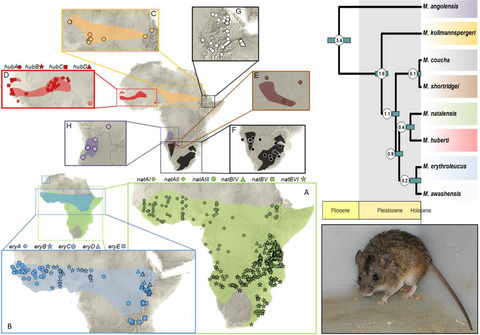
The multimammate mice (genus Mastomys) comprise very abundant and intensively studied rodents, widespread across sub-Saharan Africa. We used an extensive dataset of nearly 2700 individual cytochrome b sequences, complete mitogenomes, and hundreds of nuclear loci, to describe genetic variability of all currently recognized species and to reconstruct their evolutionary history. The first split separating Mastomys angolensis from remaining taxa occurred in mid-Pliocene, but the most intensive radiation occurred in mid-Pleistocene and was likely driven by the intensification of climate oscillations.
High molecular variability in three pine vole species of the subgenus Terricola (Microtus, Arvicolinae) and plausible source of polymorphism
- Pages: 2519-2538
- First Published: 07 October 2021
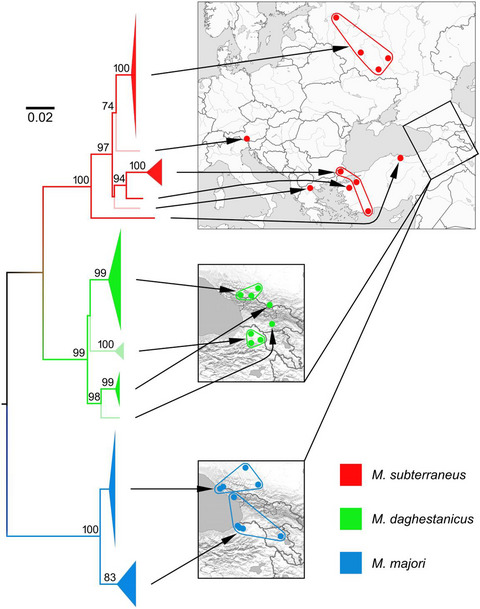
As established by multilocus DNA analysis, each of three studied pine vole species of the subgenus Terricola (the Microtus genus) is characterized by a unique pattern and measure of polymorphism. It is demonstrated by the Maximum Likelihood tree built on the basis of the mitochondrial cytochrome b gene sequencing; the clusters supported by the nuclear genes are depicted in more deep colors. Differences in the patterns of differentiation of these species are presumably due to their distinct ecological preferences.
Genetic differentiation of autochthonous sable populations in Western and Eastern Siberia
- Pages: 2539-2552
- First Published: 19 November 2021
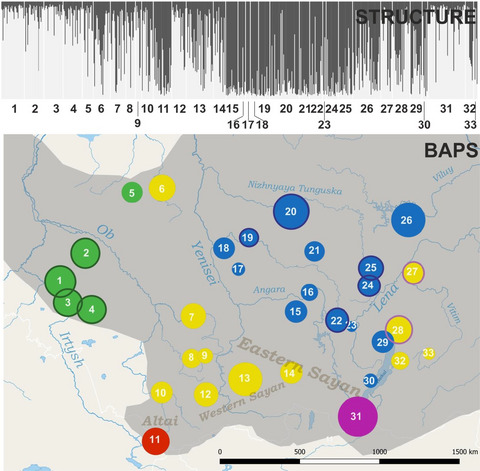
Morphological variation and active migration of sables (Martes zibellina Linnaeus, 1758) cause confusion in this species’ intraspecific taxonomy. In this study, we clarified sable population structure using 11 microsatellite loci from 33 sable populations. Our results confirmed the presence of two genetic groups in the territories of Western Siberia and the Western Altai Mountains. Another genetic group is formed by the populations of the Central Siberian Plateau. We found a few genetic groups in the Baikal region.
Massive LINE-1 retrotransposon enrichment in tamarins of the Cebidae family (Platyrrhini, Primates) and its significance for genome evolution
- Pages: 2553-2561
- First Published: 27 September 2021
The evolution of species abundances in terrestrial vertebrates
- Pages: 2562-2570
- First Published: 22 September 2021
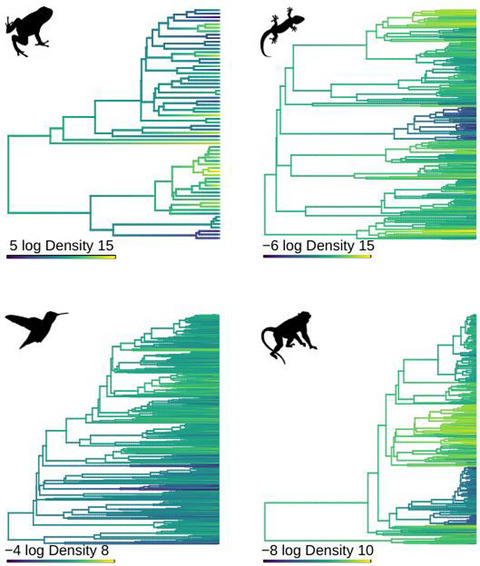
To better understand how interspecific differences in species abundances are generated over evolutionary time, we tested whether there is evidence for phylogenetic signal in population densities of terrestrial vertebrates and found strong evidence for this hypothesis. We also assessed whether the relative number of species in a clade might be a predictor of the abundance of its constituent species, testing separately both its age and diversification rate, but there was no evidence for this relationship.




